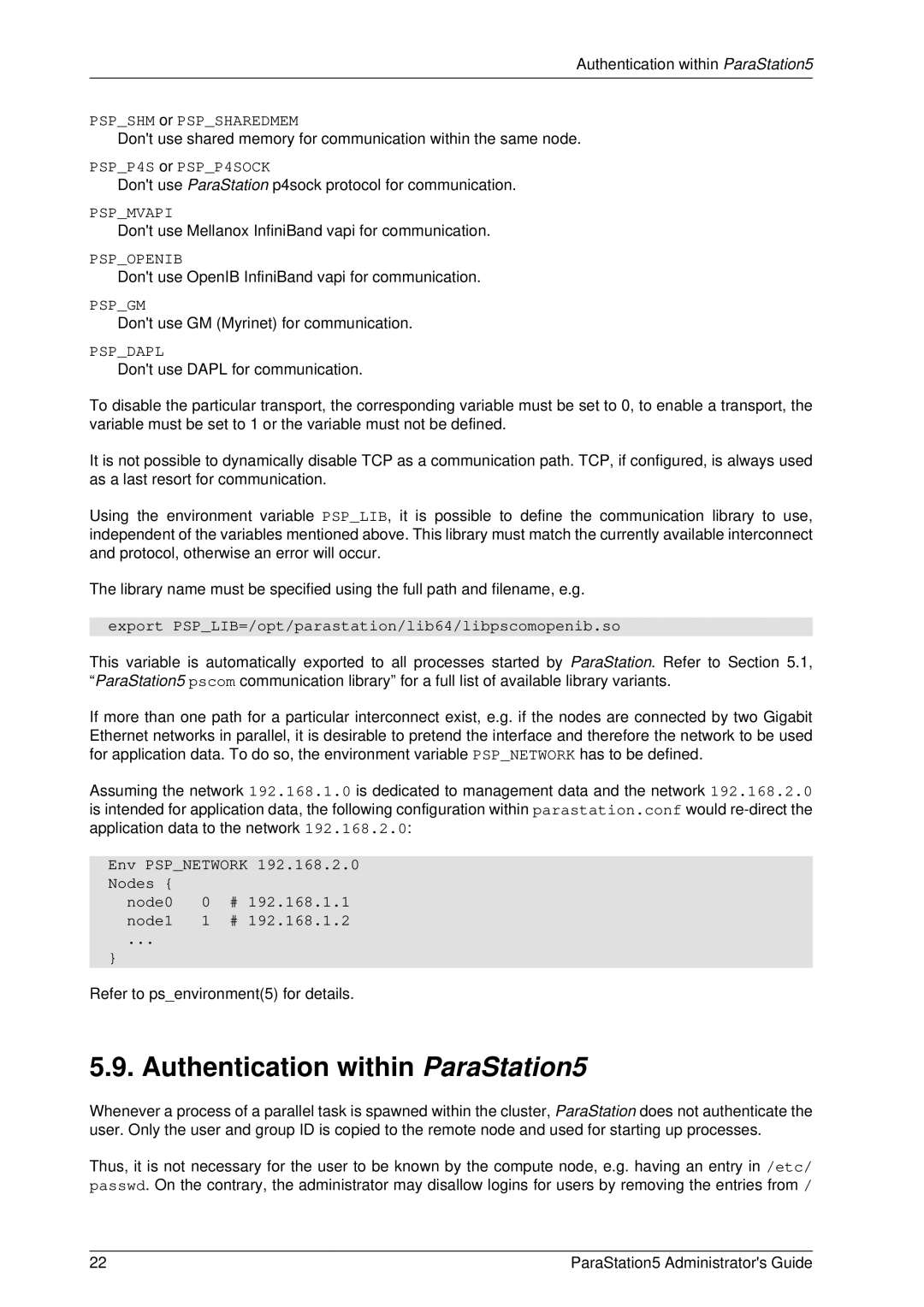
Authentication within ParaStation5
PSP_SHM or PSP_SHAREDMEM
Don't use shared memory for communication within the same node.
PSP_P4S or PSP_P4SOCK
Don't useParaStation p4sock protocol for communication.
PSP_MVAPI
Don't use Mellanox InfiniBand vapi for communication.
PSP_OPENIB
Don't use OpenIB InfiniBand vapi for communication.
PSP_GM
Don't use GM (Myrinet) for communication.
PSP_DAPL
Don't use DAPL for communication.
To disable the particular transport, the corresponding variable must be set to 0, to enable a transport, the variable must be set to 1 or the variable must not be defined.
It is not possible to dynamically disable TCP as a communication path. TCP, if configured, is always used as a last resort for communication.
Using the environment variable PSP_LIB, it is possible to define the communication library to use, independent of the variables mentioned above. This library must match the currently available interconnect and protocol, otherwise an error will occur.
The library name must be specified using the full path and filename, e.g.
export PSP_LIB=/opt/parastation/lib64/libpscomopenib.so
This variable is automatically exported to all processes started by ParaStation. Refer to Section 5.1, “ParaStation5 pscom communication library” for a full list of available library variants.
If more than one path for a particular interconnect exist, e.g. if the nodes are connected by two Gigabit Ethernet networks in parallel, it is desirable to pretend the interface and therefore the network to be used for application data. To do so, the environment variable PSP_NETWORK has to be defined.
Assuming the network 192.168.1.0 is dedicated to management data and the network 192.168.2.0 is intended for application data, the following configuration within parastation.conf would
Env PSP_NETWORK 192.168.2.0 Nodes {
node0 0 # 192.168.1.1 node1 1 # 192.168.1.2
...
}
Refer to ps_environment(5) for details.
5.9. Authentication within ParaStation5
Whenever a process of a parallel task is spawned within the cluster, ParaStation does not authenticate the user. Only the user and group ID is copied to the remote node and used for starting up processes.
Thus, it is not necessary for the user to be known by the compute node, e.g. having an entry in /etc/ passwd. On the contrary, the administrator may disallow logins for users by removing the entries from /
22 | ParaStation5 Administrator's Guide |
